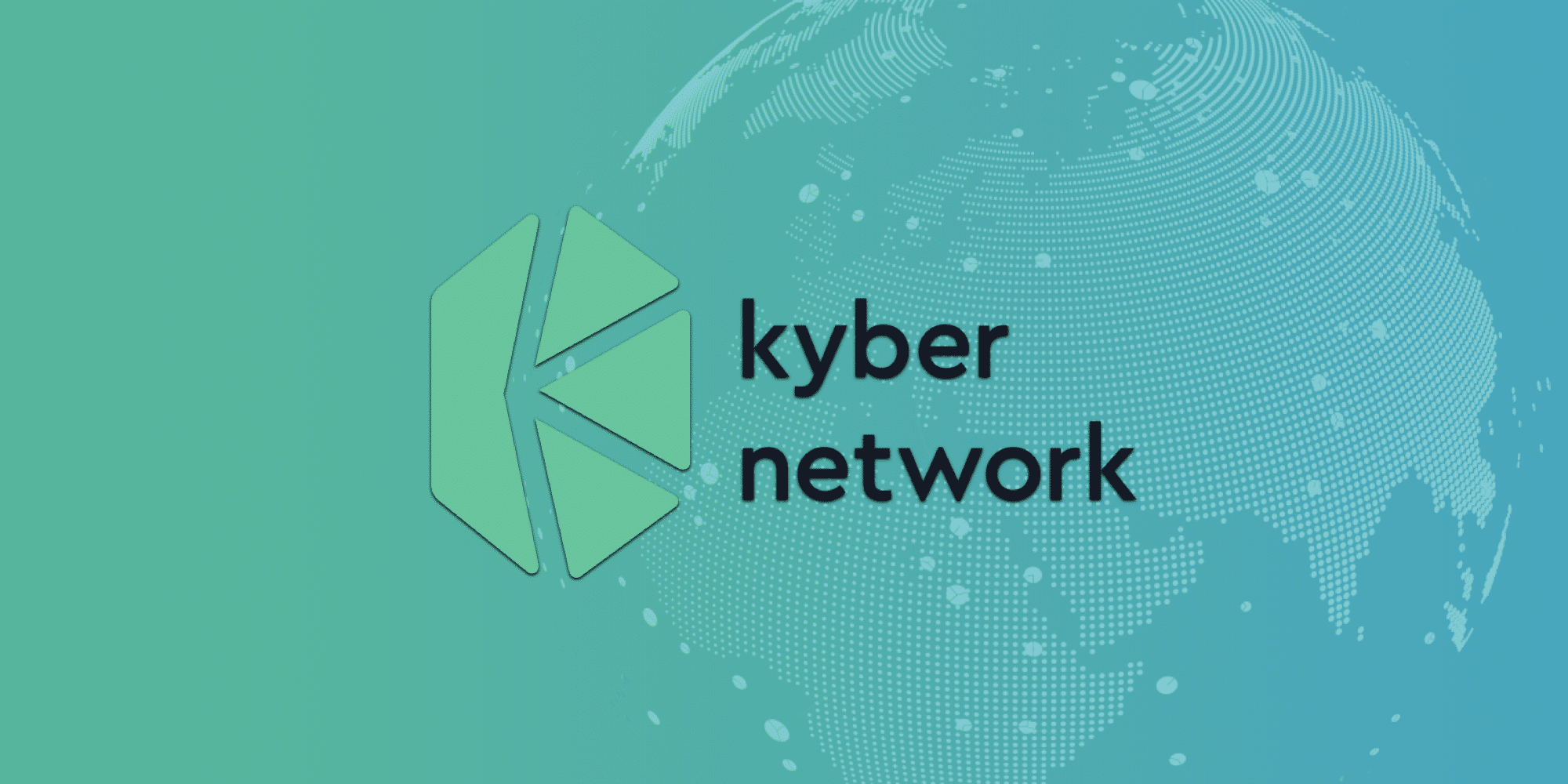
What is the Kyber Network?
The Kyber Network is project based on the Ethereum protocol that seeks to completely decentralize the exchange of cryptocurrencies and make exchange trustless by keeping everything on the blockchain.
Through the Kyber Network, users should be able to instantly convert or exchange any cryptocurrency – or so they claim. We’ll have to take a deeper look to see if they will be able to live up to these claims, what progress has been made so far, and how they differ from competitors such as the 0x Project or Bancor.
The Kyber Network has seen very rapid development. After being announced in May 2017 the testnet for the Kyber Network went live in August 2017. An ICO followed in September 2017, with the company raising 200,000 ETH valued at $60 million in just one day.
The live main net was released in February 2018 to whitelisted participants, and on March 19, 2018, the Kyber Network opened the main net as a public beta. Since then the network has seen increasing growth, with network volumes growing more than 500% in the first half of 2019.
Why Build the Kyber Network?
While cryptocurrencies were built to be decentralized, many of the exchanges for trading cryptocurrencies have become centralized affairs. This has led to security vulnerabilities, with many exchanges becoming the victims of hacking and theft.
It has also led to increased fees and costs, and the centralized exchanges often come with slow transfer times as well. In some cases wallets have been locked and users are unable to withdraw their coins.
Decentralized exchanges have popped up recently to address the flaws in the centralized exchanges, but they have their own flaws, most notably a lack of liquidity, and oftentimes high costs to modify trades in their on-chain order books.
The Kyber Network was formed to provide users with a decentralized exchange that keeps everything right on the blockchain, and uses a reserve system rather than an order book to provide high liquidity at all times. This will allow for the exchange and transfer of any cryptocurrency, even cross exchanges, and costs will be kept at a minimum as well.
The Kyber Network has three guiding design philosophies since the start:
- To be most useful the network needs to be platform-agnostic, which allows any protocol or application the ability to take advantage of the liquidity provided by the Kyber Network without any impact on innovation.
- The network was designed to make real-world commerce and decentralized financial products not only possible but also feasible. It does this by allowing for instant token exchange across a wide range of tokens, and without any settlement risk.
- The Kyber Network was created with ease of integration as a priority, which is why everything runs fully on-chain and fully transparent. Kyber is not only developer-friendly, but is also compatible with a wide variety of systems.
How Kyber Network Works
In addition to being an exchange, the Kyber Network is also being built as a transfer mechanism for cryptocurrencies. The great thing about the Kyber Network’s transfer capabilities, and something that differentiates it from existing exchanges is that the tokens sent don’t have to match the tokens received.
With the Kyber Network, once it is fully functional, users will be able to send any token and have it converted on-chain to any other token before it ends up in the receiver’s wallet.
While this is great for individuals, it also has great potential for businesses, because it means a merchant could accept ANY cryptocurrency and by using the Kyber Network they would be receiving only the currency of their choice, whether that be Bitcoin, Ethereum or some other coin.
The first of these is Kyber Swap, which allows for the instant exchange of many different tokens without wrapping, or any order books or deposits. This instant transfer network is ideal for merchants who need to know transactions are complete before goods can be delivered.
Kyber Network Roles
There Kyber Network functions through coordination between several different roles and functions as explained below:
- Users – This entity uses the Kyber Network to send and receive tokens. A user can be an individual, a merchant, and even a smart contract account.
- Reserve Entities – This role is used to add liquidity to the platform through the dynamic reserve pool. Some reserve entities are internal to the Kyber Network, but others may be registered third-parties. Reserve entities may be public if the public contributes to the reserves they hold, otherwise they are considered private. By allowing third parties as reserve entities the network adds diversity, which prevents monopolization and keeps exchange rates competitive. Allowing third party reserve entities also allows for the listing of less popular coins with lower volumes.
- Reserve Contributors – Where reserve entities are classified as public, the reserve contributor is the entity providing reserve funds. Their incentive for doing so is a profit share from the reserve.
- The Reserve Manager – Maintains the reserve, calculates exchange rates and enters them into the network. The reserve manager profits from exchange spreads set by them on their reserves. They can also benefit from increasing volume by accessing the entire Kyber Network.
- The Kyber Network Operator – Currently the Kyber Network team is filling the role of the network operator, which has a function to adds/remove Reserve Entities as well as controlling the listing of tokens. Eventually, this role will revert to a proper decentralized governance.
Kyber Network Team
The Kyber team was founded by Loi Luu, Yaron Velner, and Victor Tran and has its headquarters in Singapore. Luu was previously the co-founder of the decentralized mining pool project SmartPool, as well as the creator of Oyente, the first open-source security analyzer for Ethereum contracts.
Additionally, the team has attracted Ethereum founder Vitalik Buterin as one of their advisors, as well as having an advisory team that is both experienced and knowledgeable.
Loi Luu remains the CEO of Kyber Networks, overseeing the rapid growth that the platform is seeing in 2019. Much of that growth now comes from Decentralized Finance apps, or DeFi, which is interesting since the term didn’t even exist a year ago.
Kyber Network Community
Even though it doesn’t have a long history, the Kyber Network has been able to build a strong and supportive community, which is evidenced by their large social media followings.
On Twitter, the Kyber Network now has over 105,000 followers, while their Facebook page has over 7,500 followers. They are far more active on Twitter, and it is known as a larger platform when it comes to cryptocurrency projects, so the discrepancy isn’t surprising.
On Reddit, which is also known as a hotbed for blockchain enthusiasts, the Kyber Network sub-Reddit has garnered just over 7,300 followers. While that isn’t the largest sub-Reddit by far, it’s still a pretty active group, with multiple posts each day and a good number of responses and replies.
Finally, there’s the Kyber Telegram group, which is just shy of 7,600 members. That’s a pretty good number, and when I checked there were almost 600 online, which is also a fairly active group when compared with other blockchain projects.
The Telegram group has actually fallen somewhat in numbers recently as Kyber has moved their official announcements and discussions to Discord. That channel currently has over 1,600 members.
Kyber Network Crystal (KNC) Token
The KyberNetwork Crystal (KNC) is the backbone of the Kyber Network. It works to connect liquidity providers and those who need liquidity and serves three distinct purposes. The first of these is to collect transaction fees, and a portion of every fee collected is burned, which keeps KNC deflationary.
The KNC also ensures the smooth operation of the reserve system in the Kyber liquidity since entities must use third-party tokens to buy the KNC that pays for their operations in the network.
Finally, the KNC token is the connection between the Kyber Network and the exchanges, wallets, and dApps that leverage the liquidity network. This is a virtuous system since entities are rewarded with referral fees for directing more users to the Kyber Network, which helps increase adoption for Kyber and for the entities using the Network.
And of course there will soon be a fourth and fifth uses for the KNC, which will be as a staking token used to generate passive income, as well as a governance token used to vote on key parameters of the network.
KNC Price Performance
After the September 2017 ICO the price of KNC tokens more than doubled within a week. It quickly dropped back however and was back at $1 by the end of October. And while it tripled in December 2017, the gains weren’t nearly as impressive as many other cryptocurrencies.
On January 9, 2018, it hit its all-time high of $6.00. From there it declined steadily throughout 2018 and into 2019, hitting an all-time low of $0.113650 on February 6, 2019. While it has grown more than 300% from that low and trades at $0.474562 as of April 22, 2020 it is still down more than 50% from its ICO pricing.
On a more positive note, prior to crashing alongside the rest of the market in March 2020 due to the coronavirus, the KNC token was trading above $0.85 and there are hopes the rally will resume once the coronavirus pandemic recedes.
Transparency and Stability
The design of the KyberDAO is meant to allow for the greatest network stability, as well as maximum transparency and the ability to quickly recover in emergency situations. Initally the Kyber team will remain as maintainers of the KyberDAO. The system is being developed to be as verifiable as possible, while still maintaining maximum transparency regarding the role of the maintainer in the DAO.
Part of this transparency means that all data and processes are stored on-chain if feasible. Voting regarding network fees and allocations will be done on-chain and will be immutable. In situations where on-chain storage or execution is not feasible there will be a set of off-chain governance processes developed to ensure all decisions are followed through on.
Final Thought
The Kyber Network is positioning itself to become the leading decentralized exchange with its focus on immediate, trustless, inexpensive exchange of any cryptocurrency right on the blockchain. In fact, this might be exactly what’s needed for merchants to adopt the acceptance of cryptocurrencies in greater numbers.
Reviews of the network have been consistently positive, citing the ease of trading and immediate transfers. And usage of the network has been growing rapidly in 2019 and 2020 as more exchanges, dApps and wallet projects have turned to Kyber for liquidity. With the introduction of Katalyst and the focus on KNC holders in the governance of the KyberDAO the network should grow even more rapidly in the coming months.



















